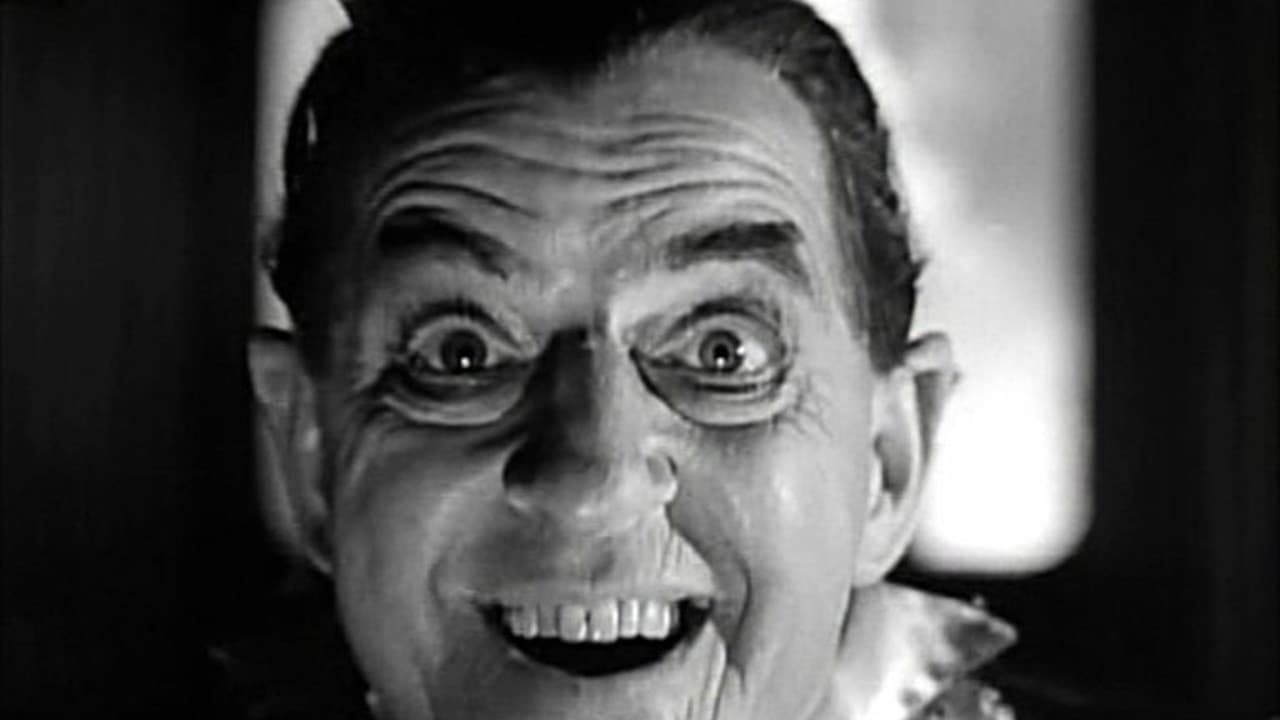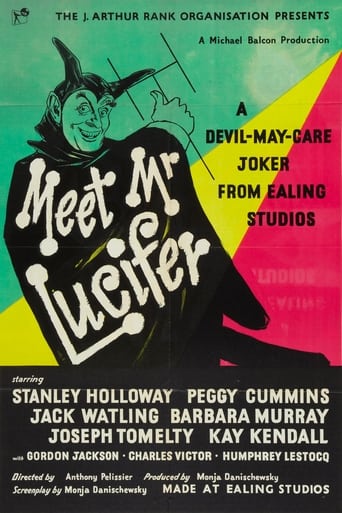

Just seen it again after many years, and what now impresses me is a a surprisingly good and sharp script. The script's critique of the negative effects of TV addiction is excellent and prescient for its day, considering how early this film was made into the march of TV (1953) which would eventually supplant film as the medium for our diet of social media.Incidentally, my parents had a set for the 1953 British Coronation, amongst the first in their neighbourhood and thus became that day a focal point for all those who did not yet have a TV.The Miss Lonelyhearts segment would work today in the way it could manipulate all those Mr. Lonelyhearts out there. Kay Kendall was never so alluring.Having said that, TV is today as important to me as it is to anyone else, at least where news and documentaries are concerned. There are, probably, some good effects in the ubiquity of TV, but I personally wonder what the final balance is. It is interesting that the science fiction writer Arthur C. Clarke observed how, along with Marshall Mcluhan, the Canadian media commentator, that TV has created a 'global village' and even the poorest of households will own a TV, even in the worst of slums or favelas, as they are known in South American. Indeed, I suspect that the social glue holding Latin American countries together are its soaps. That may hold good for the West, too. But back to the film; the ensemble acting is excellent, with Stanley Holloway as its focal point, but, goodness me, how gorgeous a young Barbara Murray and Peggy Cummings are, how they brighten the dreariness and blight of a post-war Britain all too slowly recovering from its wounds.
... View MoreThis film resonated with me being born in 1946 whose family first had a Murphy t.v.set in 1954 with its single BBC channel.Previously, my father had to drive us to his sister's house she shared with my paternal grandmother whose family already had bought a TV in 1953 on which we all saw the Queen's coronation that year.In the early part of 1954 we too had a roomful of neighbours & friends who did not possess a t.v. but who wished to view the novelty of watching t.v.London Live t.v. channel in the London area where I live are currently transmitting a collection of Ealing films mainly from the 40s & 50s and although I watch new ones whenever possible, "Meet Mr. Lucifer" had passed me by previously.This film had a galaxy of well known film stars which you can glean from the full cast list on IMDb.com.My favourite was seeing the late Kay Kendall playing "Miss Lonely Hearts Club" although I suspect it was not her voice that was dubbed onto the soundtrack.Very enjoyable I rated it 7/10.
... View MoreInteresting curio from Ealing Studios. Based on a play by Arnold Ridley ( better known as 'Private Godfrey' from 'Dad's Army' ), 'Meet Mr.Lucifer' is a whimsical fantasy warning of the potential dangers of television. In 1953, few people in Britain had sets, but its popularity was on the rise, and film makers such as Michael Balcon were worried enough to make a movie of this kind. Stanley Holloway is 'Sam Hollingsworth', a drunken actor reduced to playing 'The Devil' in a tatty pantomime version of 'Robinson Crusoe', and even that is doing poor trade as audiences are staying at home and watching the goggle box.After a few drinks during the interval, Sam goes back on stage, only to be knocked unconscious as he tries to use the trapdoor. He imagines he is in Hell itself, where the Devil - also played by Holloway - claims that the wheel and the telephone were both inventions of his to make everyone's lives miserable, and the television is his latest idea. But it is not doing the job quick enough, so Sam is recruited as Satan's helper.We then follow the lives of a group of people as a television set changes their lives for the worse. First up is 'Mr.Pedelty' ( Joseph Tomelty ) who gets a set as a retirement gift. He becomes obsessed by the thing, watching anything and everything. When there is a dancing programme on, he invites people in off the street and gives them free drinks ( all obtained on credit from his local pub ). As the debts mount, he decides he has had enough and so bequeathes it to a young couple ( Jack Watling and Peggy Cummins ). He is studying to become a chemist, and her television viewing habits spoil his concentration. To save their relationship, they pass the set on to Hector McPhee ( Gordon Jackson ), who becomes infatuated by a beautiful singer ( Kay Kendall ) known only as 'The Lonely Hearts Girl'...It is not the programmes that come under attack, but the medium itself. Its power as a force for good is barely mentioned, making this a bit one-sided. My biggest complaint is that there is too little of Stanley Holloway. The film is only really engaging when he is around. Also, the satire - if that's the right word - could have been stronger. I suppose television had not been around long enough for a major assault on the medium to be justifiable. Fun cameos from Ian Carmichael and Joan Sims, plus celebrities of the time such as Gilbert Harding and MacDonald Hobley. Eric Rogers - of 'Carry On' fame - did the music, and some of it was reused in 'Carry On Spying' ( 1964 ). Just before the end credits roll, the film takes a pot-shot at 3-D movies!
... View MoreAnother in a long line of great black and white British films of the 1950's. When Mr Pedelty (Joseph Tomelty) leaves his firm, he is given a TV set as a retirement present. At first he enjoys all the attention from his neighbours,but soon the attraction wears off, and he sells it on to the young married couple (Jack Watling and Peggy Cummins) living in the flat above him. They soon encounter the same problems,and again the set is passed on to several different charatures all with the same results. A very enjoyable story with a strong cast including Kay Kendall, Barbara Murray, and as the pantomime devil Stanley Holloway.
... View More